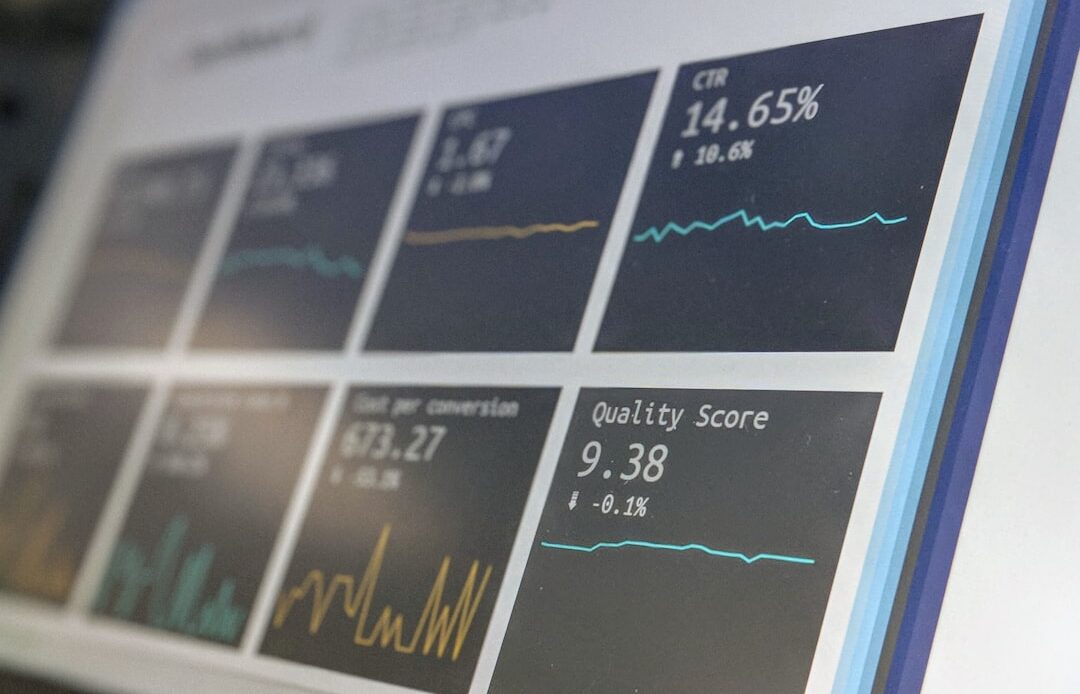
Sentiment analysis, often referred to as opinion mining, is a subfield of natural language processing (NLP) that focuses on determining the emotional tone behind a body of text. This technology enables the extraction of subjective information from various sources, allowing organizations to gauge public sentiment regarding products, services, or even broader societal issues. By employing algorithms and machine learning techniques, sentiment analysis can classify text as positive, negative, or neutral, providing valuable insights into consumer attitudes and opinions.
The rise of digital communication has made sentiment analysis increasingly relevant, as vast amounts of unstructured data are generated daily across social media platforms, review sites, and forums. The significance of sentiment analysis extends beyond mere data collection; it serves as a powerful tool for understanding human emotions and behaviors. By analyzing sentiments expressed in text, businesses can make informed decisions that align with customer expectations and preferences.
The technology has evolved to include advanced techniques such as deep learning and neural networks, which enhance the accuracy of sentiment detection. As organizations strive to remain competitive in an ever-changing market landscape, the ability to interpret and respond to public sentiment has become a critical component of strategic planning.
The Role of Sentiment Analysis in Business
In the business realm, sentiment analysis plays a pivotal role in shaping marketing strategies and enhancing customer engagement. Companies leverage sentiment analysis to monitor brand perception and track consumer feedback in real-time. For instance, a retail company may analyze customer reviews on its website and social media channels to identify common themes in customer satisfaction or dissatisfaction.
By understanding these sentiments, businesses can tailor their marketing campaigns to address specific concerns or highlight positive attributes that resonate with their audience. Moreover, sentiment analysis can inform product development and innovation. By analyzing customer feedback on existing products, companies can identify features that are well-received and those that require improvement.
For example, a tech company might discover through sentiment analysis that users appreciate the battery life of a particular smartphone model but are frustrated with its camera quality. This insight can guide the company’s research and development efforts, ensuring that future iterations of the product align more closely with consumer desires.
Sentiment Analysis in Social Media
Social media platforms serve as a rich source of data for sentiment analysis due to their vast user base and the volume of interactions that occur daily. Brands utilize sentiment analysis tools to monitor conversations about their products or services across platforms like Twitter, Facebook, and Instagram. By analyzing posts, comments, and hashtags, companies can gain insights into how their audience perceives them in real-time.
For instance, during a product launch, a company might track social media sentiment to gauge initial reactions and adjust its marketing strategy accordingly. The immediacy of social media also allows brands to respond swiftly to negative sentiments. If a company notices a surge in negative comments regarding a recent service outage, it can take proactive measures to address customer concerns and mitigate potential damage to its reputation.
This responsiveness not only helps in crisis management but also fosters a sense of trust and loyalty among consumers who appreciate transparency and accountability from brands.
The Impact of Sentiment Analysis on Customer Experience
Customer experience is increasingly becoming a key differentiator for businesses in competitive markets. Sentiment analysis contributes significantly to enhancing this experience by providing insights into customer preferences and pain points. By analyzing feedback from various touchpoints—such as surveys, chatbots, and customer service interactions—companies can identify areas where they excel and where improvements are needed.
For example, if sentiment analysis reveals that customers frequently express frustration with long wait times for support, a company can implement changes to streamline its customer service processes. Furthermore, sentiment analysis enables personalized marketing efforts that resonate with individual customers. By understanding the sentiments associated with specific demographics or customer segments, businesses can tailor their messaging to align with the values and emotions of their target audience.
For instance, a travel company might analyze sentiments related to eco-friendly travel options among younger consumers and subsequently promote sustainable travel packages that appeal to this demographic’s preferences.
The Use of Sentiment Analysis in Market Research
Market research has traditionally relied on surveys and focus groups to gather consumer insights; however, sentiment analysis offers a more dynamic approach by tapping into real-time data from various online sources. This method allows researchers to capture authentic consumer opinions without the biases that can arise from structured survey formats. By analyzing social media conversations, online reviews, and blog posts, researchers can gain a comprehensive understanding of market trends and consumer behavior.
For example, during the launch of a new product category—such as plant-based food alternatives—companies can utilize sentiment analysis to assess public perception and identify potential barriers to adoption. By examining sentiments expressed in discussions about health benefits or taste preferences, businesses can refine their marketing strategies and product offerings to better meet consumer expectations. This agile approach to market research not only saves time but also provides deeper insights into evolving consumer preferences.
Sentiment Analysis and Brand Reputation Management
Brand reputation is an invaluable asset for any organization, and sentiment analysis plays a crucial role in managing it effectively. Companies must be vigilant in monitoring public sentiment to protect their reputation from potential crises or negative publicity. By employing sentiment analysis tools, brands can track mentions across various platforms and identify shifts in public perception before they escalate into larger issues.
For instance, if a food brand faces allegations regarding product safety, sentiment analysis can help the company gauge the extent of negative sentiment surrounding the issue. By analyzing social media discussions and news articles, the brand can develop a targeted communication strategy to address concerns transparently and reassure consumers about their commitment to quality and safety. This proactive approach not only mitigates reputational damage but also reinforces consumer trust in the brand.
The Ethical Implications of Sentiment Analysis
While sentiment analysis offers numerous benefits for businesses and organizations, it also raises ethical considerations that must be addressed. One significant concern is privacy; as companies analyze vast amounts of user-generated content, they must ensure that they are not infringing on individuals’ rights or misusing personal data. Transparency about data collection practices is essential for maintaining consumer trust.
Additionally, there is the risk of misinterpretation or bias in sentiment analysis algorithms. If these algorithms are trained on biased datasets or lack diversity in their training samples, they may produce skewed results that do not accurately reflect public sentiment. This can lead to misguided business decisions based on flawed insights.
Therefore, it is crucial for organizations to implement rigorous testing and validation processes for their sentiment analysis tools to ensure fairness and accuracy.
The Future of Sentiment Analysis Technology
The future of sentiment analysis technology is poised for significant advancements as artificial intelligence (AI) continues to evolve. Emerging techniques such as deep learning are enhancing the ability of algorithms to understand context, sarcasm, and nuanced expressions of sentiment within text. This progress will lead to more accurate sentiment detection across diverse languages and cultural contexts.
Moreover, as voice recognition technology becomes more sophisticated, sentiment analysis will expand beyond text-based data to include spoken language. This shift will enable businesses to analyze customer sentiments expressed during phone calls or voice interactions with virtual assistants. The integration of multimodal data—combining text, audio, and visual inputs—will provide a more holistic view of consumer sentiments and behaviors.
How Sentiment Analysis is Used in Politics and Public Opinion
Sentiment analysis has found its way into the political arena as well, where it serves as a valuable tool for gauging public opinion on policies, candidates, and social issues. Political campaigns utilize sentiment analysis to monitor voter sentiments expressed on social media platforms during election cycles. By analyzing discussions surrounding key topics or debates, campaign teams can adjust their messaging strategies to resonate with constituents’ concerns.
For example, during a contentious election season, candidates may employ sentiment analysis to track public reactions to their speeches or policy proposals in real-time. This information allows them to pivot their strategies based on voter feedback and address any emerging issues that may impact their chances of success at the polls.
The Challenges and Limitations of Sentiment Analysis
Despite its many advantages, sentiment analysis is not without challenges and limitations. One major hurdle is the complexity of human language itself; nuances such as sarcasm, irony, or cultural references can lead to misinterpretation by algorithms. For instance, a sarcastic comment expressing dissatisfaction may be misclassified as positive if the algorithm fails to recognize the underlying tone.
Additionally, the sheer volume of data generated across digital platforms poses scalability challenges for sentiment analysis tools. Processing large datasets in real-time requires significant computational resources and sophisticated algorithms capable of handling diverse linguistic structures. Furthermore, maintaining accuracy across different languages adds another layer of complexity for organizations operating in global markets.
The Overall Impact of Sentiment Analysis
Sentiment analysis has emerged as an indispensable tool for businesses seeking to navigate the complexities of consumer behavior in today’s digital landscape. Its applications span various domains—from enhancing customer experience to informing marketing strategies—demonstrating its versatility and relevance across industries. As technology continues to advance, the potential for more accurate and nuanced sentiment detection will only grow.
However, organizations must remain vigilant about ethical considerations surrounding data privacy and algorithmic bias as they harness the power of sentiment analysis. By addressing these challenges head-on and leveraging emerging technologies responsibly, businesses can unlock valuable insights that drive innovation while fostering trust among consumers in an increasingly interconnected world.
